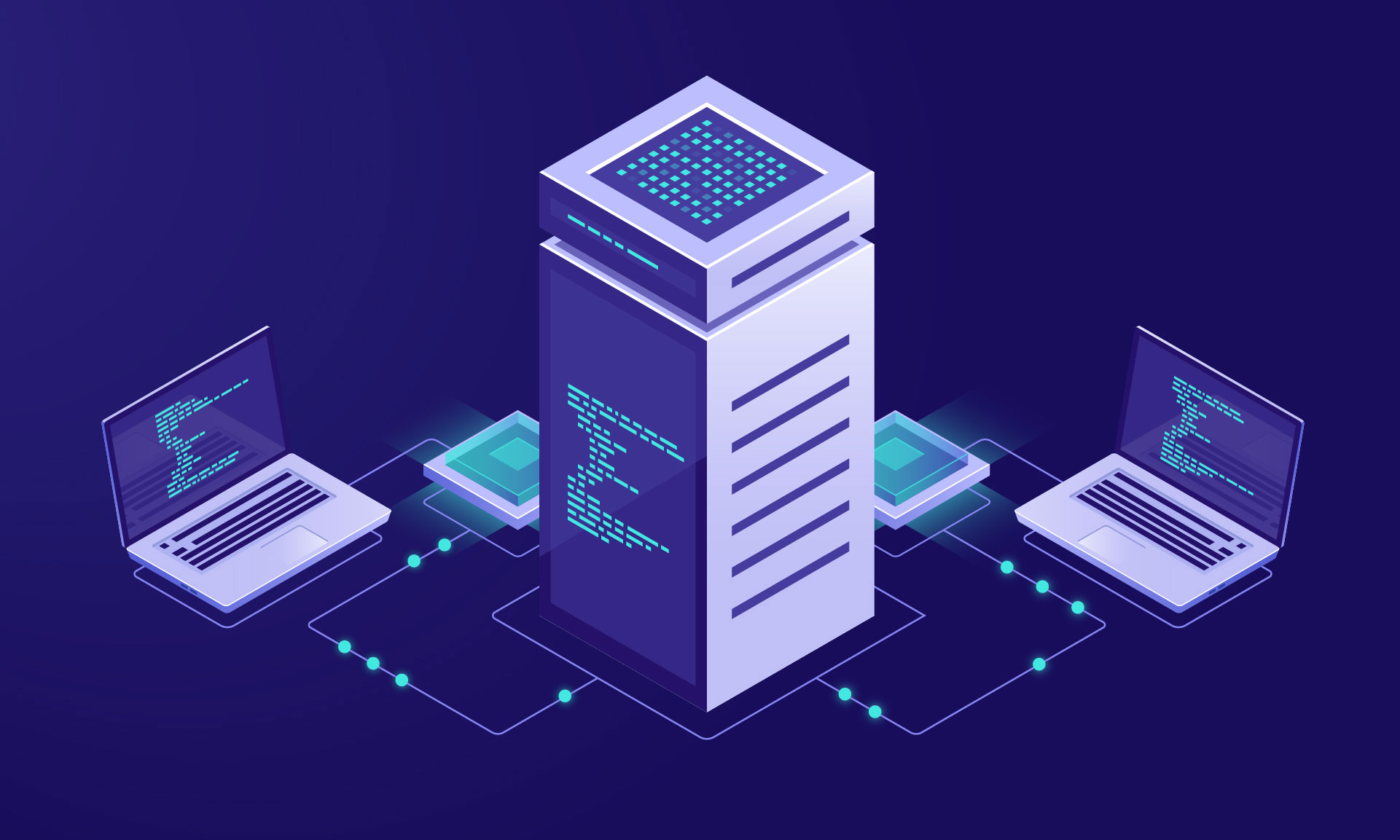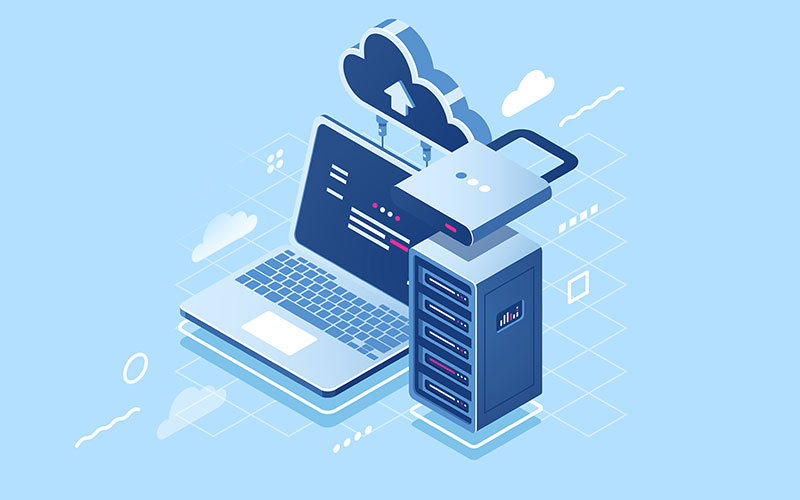On the one side where the technology is devoting a hardcore efforts to make human lives worry-free by keeping their heavy datastore on the cloud server for lifelong in a well-managed way. While just opposite to it here is a big concern that is the data is completely secured on the webserver? Well truly said, No, until you haven’t implemented the security features in it. So let’s come and elaborate, for what security options you need to go ahead to prevent your server stored data, from web attackers. Before that, you must have to know that what are the major and common mistakes, that allows the web attackers to snatch the server.
Common Web Security Mistake and the way to prevent it

1. Injection flaws
The classic failure in the filtration of unfaithful data results in injection flow. This failure generally occurs when a user injects an unfiltered or unoperated data on the SQL server to the browser and LDAP server The SQL server is also referred to SQL injection. With this security fault, the web attackers and hackers can easily inject and run the harmful commands within the server and as a consequence to this we have a suffer from the huge data loss and the hacking of clients browser.
Security: Fortunately ensuring against injection flaw is just a proper filtration of the data that you are going to insert or upload on the server, and the best way for this is to use a well-trusted data storage server like SQL.
Since data filtration is quite difficult to do right, what I generally exhort is to depend on your system's sifting capacities: they are demonstrated to work and are completely examined. If you don't utilize systems, you truly need to contemplate whether not utilizing them truly make sense in your server security setting. 99% of the time it doesn't.
2. Broken Authentication
This is an assortment of numerous issues that may happen during broken confirmation, however, they don't all come from a similar main driver.
Expecting that anybody actually needs to roll their own confirmation code in earlier, it is very difficult to get right, there are a bunch of potential entanglements, just to specify a few:
-
The URL may contain the session id and hole it in the referer header to another person.
-
The passwords probably won't be scrambled either away or travel.
-
The session ids may be unsurprising, accordingly getting entrance is insignificant
-
Session obsession may be conceivable.
-
Session hacking may be conceivable, timeouts not actualized right or utilizing HTTP (no SSL security), and so on…
Security : The most direct approach to ignore this web security weakness is to utilize a system. You may have the option to execute this effectively, yet prior it was easy. In the event that you would like to roll your own code, be very suspicious and instruct yourself on what the traps are. There are many.
3. Cross-Site Scripting (XSS)
This is genuinely far and wide data security failure. A web attacker gives your web application JavaScript labels on the information. At the point when this information is gotten back to the client unsafely, the client's browser will execute it. It tends to be as straightforward as making a connection and convincing a client to click it, or it may be very significantly eviler. On page load the content runs and, for instance, can be utilized to post your browser cookies to the web attacker.
Security: This is a basic web security arrangement to do not restore HTML labels to the customer. This has the additional advantage of guarding against HTML infusion, a comparable attack whereby the hackers insert plain HTML content. Generally, the workaround is just changing overall HTML elements, The other frequently utilized technique for server safety is utilizing ordinary articulations to strip away HTML tags using standard expressions on < and> tags, however, this is risky as many programs will interpret severely broken HTML tags. Better to change all characters over to their escaped partners.
4. Security misconfiguration
Web servers and applications that have been misconfigured are much more normal than those that have been designed appropriately. Maybe is no deficiency of approaches to mess up. As like the mentioned instances:
-
Running the application with debugging empowered production.
-
Having registry listing empowered on the server, which releases important data.
-
Running outdated or older version software/frameworks.
-
Having unuseful services running on the machine.
-
Not changing default keys and passwords.
-
Revealing bug fixing with data to the hackers, for example, stack follows.
Security: Have a fine development and deployment process, which can run tests on send. The helpless security misconfiguration solution is post-commit snares, to keep the code from going out with default passwords and additionally, development stuff worked in.
5. Sensitive data exposure
This web security fault is about crypto and asset assurance. Delicate data should be scrambled consistently, remembering for transaction at rest. Credit card data and client passwords ought to never travel or be put away decoded, and passwords ought to consistently be hashed. Clearly, the crypto/hashing calculation should not be a frail one – if all else fails, web security guidelines suggest AES (256 pieces and up) and RSA (2048 pieces and up).
Keeping in mind that it's implied that session IDs and crucial data ought not to transfer in the URLs and cookies ought to have the protected banner on, this is significant and can't be over-underscored.
Security:
-
In Data transfer: Use HTTPS with a legitimate testament and PFS (Perfect Forward Secrecy). Try not to acknowledge anything over non-HTTPS associations. Have the protected banner on treats.
-
In data storage : This is harder. Most importantly, you need to bring down your openness. In case of no need for sensitive information, shred it. Information you don't have can't be taken. Try not to store crucial data ever, as you likely would prefer not to need to manage being PCI consistent. Join with an instalment processor, for example, Stripe or Braintree. Second, in the event that you have crucial data that you really need, store it scrambled and ensure all passwords are hashed. For hashing, utilization of bcrypt is suggested. If you don't like to use bcrypt, instruct yourself on salting and rainbow tables.
Above we learnt everything about server security, meanwhile whenever a server gets harm by the web attackers, it directly affects the website’s security. So, after knowing the reasons and solution to secure the server, we also need to understand the ways to improve the website security on the server.
Top 5 Ways to Improve Your Websites Safety

1. Always use updated software and plug-ins
Every day thousands of websites are uploaded on the server and from all of them, countless websites ate getting harm and hacked by the web attackers, which is the major concerning issue these days. Thus, to keep safe and secure your web portal on the cloud server, always prefer to use the latest version of software and plugin also make them updated time to time whenever the new version of the updated version of the specific software or plugin gets a release. This will reduce the hacking risk of a website.
2. Add HTTPS and an SSL Certificate
To protect your site, you need a safe URL. If you are long to send and share private data through your website, you must implement HTTPS, instead of HTTP, to convey that data securely.
What is HTTPS?
HTTPS (Hypertext Transfer Protocol Secure) is a convention used to give security over the Internet. HTTPS keeps capture attempts and breaks from happening while transferring the data.
Additionally, to create a well-secured online association, your site likewise needs an SSL Certificate. If you want your visitors to make registration on your website first before to access or to transfer ant crucial data or information always make sure to encrypt your connection.
What is SSL?
SSL (Secure Sockets Layer) is another fundamental site convention. This exchanges clients data between the site and your database. SSL encodes data to keep it safe from others while data exchanging or transferring process
It denies those without legitimate position the capacity to get and access the data also. GlobalSign is the best instance of an SSL endorsement that works with most sites.
3. Create Password Wisely
Passwords are the another that the web attackers can easily crack, there while making a password for your website, try to avoid the common password norms, instead of that must choose a multi-character integrated password, as such strong sense passwords are tough to crack.
Also, a crowd of individuals are loving to use the same password for each portal they are using, while it’s not good for the data safety purpose. So always create and use a new password for every different website, it can be difficult for the attackers to guess the password.
Apart from that, a frequent change in the secret code/password in the duration of each three to four months also help you to prevent the site from web attack.
4. Use a Secure Web Host

Think about your site's domain name, address. and, think about the web host where your website exists on the server.
Prior to proceeding the specific web host, in addition, to upload your site on its server must check the reliability of that host. As Numerous hosts give server security features that better ensure your uploaded data. There are many things to check for while picking a host such as:
-
Does the web have to offer a Secure File Transfer Protocol (SFTP)? SFTP.
-
Is FTP Use by Unknown User crippled?
-
Does it utilize a Rootkit Scanner?
-
Does it offer record reinforcement administrations (Data backup)?
-
How well do they stay up with the latest on security updates and trends?
Though you pick SiteGround or WP Engine as your web host, ensure it has all the things that a website need to keep itself from web attackers though it’s a web-generated virus or a web attack by ant expert web hacker.
5. Record the user activity
At first, you may feel good giving a few elevated level representatives admittance to your site. You give each authoritative advantages figuring they will utilize their site cautiously. Whether this is the ideal circumstance, it isn't generally the situation.
Unluckily, representatives don't consider site security when signing into the CMS, besides they only always think to complete the task as soon, which is definitely a harmful act for the health and security of the web portal. Instead of doing anything in hurry or unsafe way, go ahead with a safe zone will be a better choice for you in that you just need to track each activity of the website visitor within the site. In the sum of this, it is essential to vet your representatives prior to giving them site access. See whether they have experience utilizing your CMS and if they realize what to search for to maintain a strategic distance from a security penetrate.
Instruct each CMS client about the significance of passwords and programming refreshes. Reveal to them all the manners in which they can help keep up the site's security.
To monitor who approaches your CMS and their authoritative settings, make a record and update it regularly.
Representatives go back and forth. Probably the most ideal approaches to forestall security issues is to have an actual record of who does what with your site.
Be reasonable with regards to client access.
6. Change Your CMS Default Settings

The most well-known security attack on websites is fully automated. What many assault bots depend on is for clients to have their CMS settings on default.
As when these default attacks see a website with default CMS setting they attack and hack the site immediately. Therefore to prevent CSM site from such attacks, make sure to change the default setting of your CMS.
CMS settings can incorporate changing control remarks/comments, visibility, and authorizations.
As the best instance to this, you must change the file permission default settings, and allow file access only to the particular individuals who are related to it.
Each file has three consents and a number that speaks to each authorization as Read – the one can only view the file content, Write – They can change the file content, and Execute- the one who can run the file content.
Alongside the default consent settings, there are three client types:
1. Owner – the maker of the document, however, possession can be changed. Just a single client can be the proprietor at a time.
2. Group – Each record is allotted to a group. Clients who are important for that particular group will access the file data.
3. Public – Everyone else.
Customize clients and their consent settings from time to time. Try not to keep the default settings with no groups, or you will run into site security issues eventually.
7. Backup Your Website
Perhaps the best strategy to prevent your site is to have a decent backup solution. There are a few backup solutions available, that you can use to help recuperate harmed or lost documents.
Keep your site data off-site. Try not to store your back up on a similar server as your site; they are as helpless against assaults as well.
Decide to keep your site data on a home PC or hard drive. Locate an off-site spot to store your data and to shield it from equipment disappointments, hacks, and infections.
Another choice is to back up your site in the cloud. It makes putting away data simple and permits admittance to data from anyplace.
Instead of picking where to back up your site data, you should consider to automate them. Utilize a solution where you can plan your site back up. You additionally need to guarantee your solution has a solid recuperation framework.
Along with this, also create a back up of your back up, in this way you will feel more secure for your data and of course by doing this you can easily recover your data from any point before the hack or infection happens.
8. Check Web Server Configuration Files
Become acquainted with your web server internal configuration. You can discover them in the root web index. The web server allows you to oversee server rules. This incorporates orders to improve site security.
There are distinctive file types uses with each server. Find out about the one you use.
-
Apache webserver utilize the .htaccess file
-
Nginx server uses Nginx.conf
-
Microsoft IIS server use the web.config
Only one out of every odd website admin realizes which web server they use. In the event that you are one of them, uses a site scanner like Site check to check your site. It filters for known malware, virus, blacklisting status, website bugs, etc..
The more you think about the present status of your site security, the better. It gives you an opportunity to fix it before any damage comes to it.
9. Use Web Application Firewall
Also to keep your sire safer, ensure you apply for a web application firewall (WAF). It sets between your site server and the data association. The object is to peruse all of the data that goes through it to ensure your site.
Today, most WAFs are cloud-based and are an attachment and-play administration. The cloud server is a door to all approaching traffic that obstructs all hacking endeavours. It additionally sifts through different sorts of undesirable traffic, similar to spammers and malevolent bots.
10. Tighten Network Security
At the point when you think your site is secure, you need to dissect your organization security.
Employees who use office PCs may coincidentally be making a risk pathway to your site.
To keep them from offering admittance to your site's server, consider doing the mentioned at your business:
-
Terminate the PC logic after each short activity.
-
Make sure your framework remind your users to change the password in every specific time duration.
-
Ensure all gadgets connected to the organization are filtered for malware each time they are attached.
Security is Priority
Security is the biggest challenge while working on the cloud server. It's a moving objective, and it requires a great deal of exertion to keep steady over things. So how might you fabricate a business and keep steady over a changing security scene? Principally, you need to remember you're not a specialist and do all that you can to remain mindful of issues and stop them from really developing. Much the same as you wouldn't neglect to do your expenses, you would prefer not to fail to remember your security support.
Odds are acceptable that in case you're constructing a business, your skill lies in a zone other than security. Individuals can spend a lifetime committed to understanding the complexities of security. You won't have the opportunity to turn into a specialist, however, you can't stand to look the alternate way. How to deal with it? There are some fundamental ideas to remember.
Much the same as for some other sort of programming surrenders, you'll need a blend of tools to both forestall issues in any case and find and respond to issues that figure out how to fall through. An even web attack on the central issues will get you far.
Therefore the listed are some manual tricks that will help you to keep on with the server security:
Automation and Scanning
Always use scanned and automated devices especially when you need to connect the third-party device to your personalized PC to the log in the admin from outside. As the use of an unprotected or unscanned device may transfer viruses which can harm your site.
Professional Security Audits
A bug fixing setup is an incredible method, to begin with, entrance testing, however, it's not a viable replacement for employing experts. While outer analyzers can jab and nudge, they'll always be unable to explore as profoundly as somebody you work intimately with. They can audit framework engineering, security rehearses, discharge the executives, and considerably more.
Recruiting experts is costly, and when you have no income it's presumably pointless excess. Similar to whatever else, there's a scope of alternatives accessible as your business develops. When you have the income, contract with somebody to do the basics. At that point, as the business creates, you'll have the option to grow and improve by acquiring bigger or more experienced groups. Whatever you choose to do, don't excuse proficient skill.
Data Encryption at Rest

Encoding information is turning into a famous subject these days. While it has gotten regular to salt and hash passwords, practically any remaining information put away in information bases is accessible in plain content. On the off chance that somebody gains admittance to the information base, they gain admittance to the information. If the information is encrypted, however, they would likewise need to get the keys for the information to be valuable. As hacks increment and frameworks become more uncovered, an ever-increasing number of clients are mentioning extra layers of security, and the benefit of encrypted data is expanding.
Like some other security set up, encrypted data makes getting to the data less helpful. For things like back up, this is a minor compromise and clearly justified, despite any trouble. Though, incorporating encryption into your creative engineering is somewhat riskier or complicated. Some information stores and systems make it simpler, yet it is anything but not a typical practice yet.
Also, encrypted data is truly a hint of something larger. You'll additionally have to actualize devices and process for safely putting away the keys, turning them, controlling access, and how to react if a key is undermined. Luckily, OWASP has some strong direction about cryptographic storage to assist you with choosing what's appropriate for your application. It's a bit complex subject, yet this extra mindfulness could help you move the correct way.
Authorization
Approval is about granular authorizations. In the event that verification reveals to you what someone's identity is, approval tells you what they're permitted to do. Perhaps the best standard is to keep it as basic as could reasonably be expected while as yet taking care of business. Progressed and complex authorizations are ready for botches in allowing consent, and it's excessively simple for some unacceptable individual to wind up with some unacceptable authorizations. The most progressive approval framework on the planet doesn't make a difference in the event that it makes disarray and mistakes during the time spent giving consent.
It's most ideal not to think about each consent and afterwards make a granular framework for overseeing it. All things considered, consider your clients and how their jobs compare to your framework. You can generally make more granular controls not far off, however, before all else, you probably have a couple of levels of consents. For example, you might need to restrict client the board to a specific group of clients, and you should limit admittance to account-level usefulness like charging and undoing. Keep it significant level from the start, and don't stress over profoundly granular consents until there's staggering interest from clients.
Also, if your framework includes various clients, plan it to help numerous clients. Having clients share a login is requesting inconvenience. I've experienced many frameworks for truly genuine software that faces failure for quite a long time to have multiuser frameworks, and they unavoidably made issues and difficulties in sharing client names and passwords.
At last, recall revalidating passwords for touchy activities. For example, when somebody goes to drop a record or change their secret key, you'll need to request the secret key before they proceed. Something else, in the event that somebody left their PC open, anybody could go along and drop their record or change their secret key. To assemble an office for revalidating passwords, and make it simple to include front of any touchy solicitations.
Session Management for Users
If you never assembled a framework for overseeing verification and approval for a web application, invest some energy on this stuff. The tech side joined with client experience and security requirements can make an intricate framework with unlimited stages.
How long should a session last before you log somebody out? When they log out, would it be advisable for it to just be their present meeting or all meetings on all machines? Should clients have the option to see and deal with all dynamic meetings for their client account? What exercises ought to require the client to reappear their secret key?
You likely don't have to give the progressed meeting the board session directly out of the door, however, it merits remembering. Or then again, if your application has high-security requirements, you'll need to record all meetings attached to a particular client. This includes catching the IP address, client specialist, and working framework data so clients can distinguish any session that isn't their own. Mainly it has been assumed that this way of organizing the website login session can keep it secure forever.
Conclusion
As an entrepreneur and website admin, setting up a web portal is not just enough, also you have to keep care of its security too, and for the security concern of your web server or website, if your prime to keep track its safety concern time to time, with including, time to time backup, updates of tools and frameworks, Changes in password and default settings. That simply means if you are well updated with the security term and follow and implement all in your web portal carefully, then its harder for the web attacker to harm your site easily.






